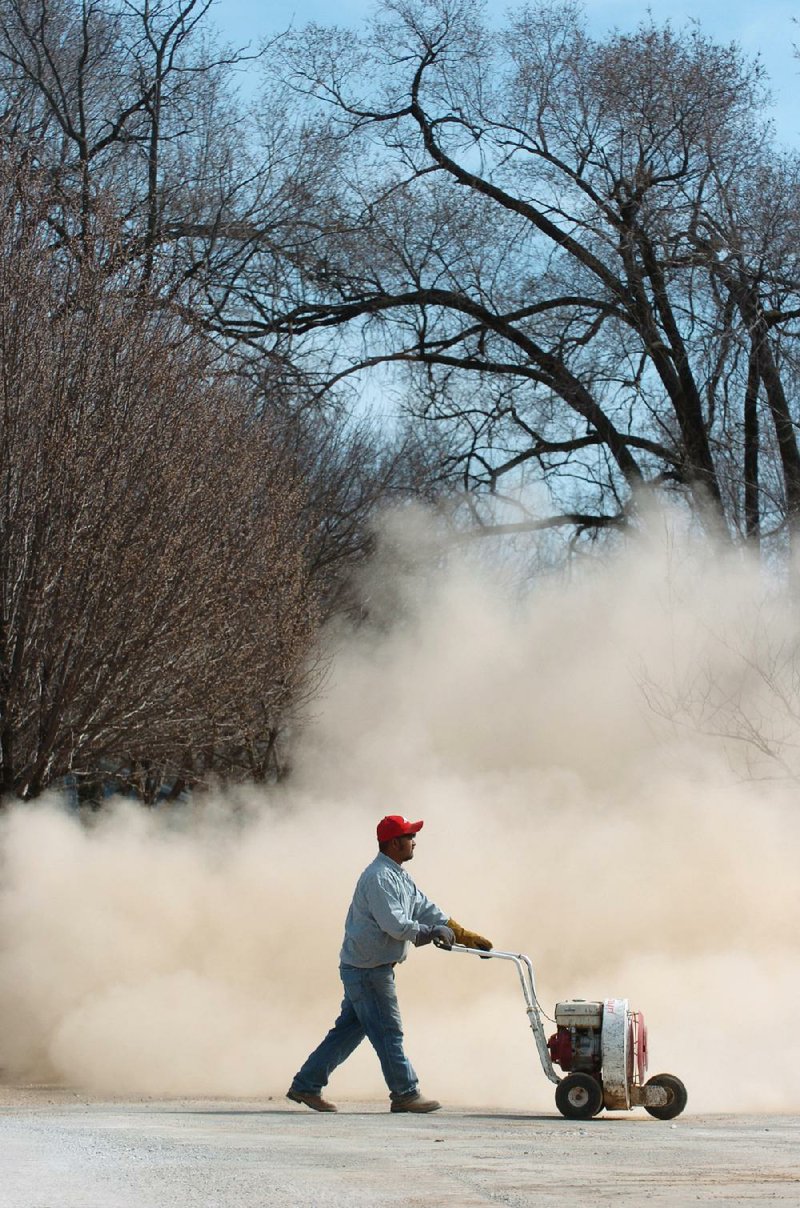Dear Otus,
My husband and I retired to the Village last November, so this is our first spring here. We had such a cold winter that it reminded us of back home in Wisconsin. But during the recent warmer weather, our entire house was covered with a quarter inch of sticky greenish-yellow goo.
A squirrel has been stuck and hanging by his hind legs on the oak tree out front for an hour. My neighbors have subscribed to the paper for years and tell me you’re the one to ask about this sort of thing.
- Anna Falacksis, Hot Springs Village
Dear Anna,
It was wholly a pleasure to hear from you and to welcome you to Arkansas’ legendary pollen season.
Yes, what with the colder winter and cold snap earlier this week, experts predict there will be a “significant pollen event” this spring.
The temperatures in the 80s last week saw an explosion of pollen that had to be removed by Little Rock city crews before it clogged drainage pipes.
What you are now witnessing is the annual surfeiticity of wind-pollinated trees, mostly pine (green) and oak (yellow and green) pollen.
The combination of the two pollens forms a sort of chartreuse patina on all surfaces and loess-like calcareous drifts that can be up to a foot deep.
That’s in a normal year.
Warmer weather following such an abnormally cold winter typically heralds the arrival of the cyclical aberration known as “El Estornudo.” El Estornudo is to blame for the current “sliming” of the state, including the sticky goo that covers Hot Springs Village.
Most of this year’s glutinous slime emanates from oak catkins. These are the stringy green and yellow “flowers” hanging from the branches. A typical catkin is a couple of inches long, but this spring there have been reports of mutant bifurcated catkins up to six inches.
The huge amount of pollen granules released means the excess is not readily absorbed into the ground. If a steady rain should come during this period, giant green and yellow pollen rivers form, leaving behind yellowish high-water marks.
Fifty-six percent of the state is covered by trees. That’s why after the torrential statewide downpour last Sunday, the Arkansas River actually ran pale green from the Trimble Lock & Dam at Barling to the Taylor Lock & Dam at Ozark.
Downstream, the U.S.
Army Corps of Engineers had to close the Big Dam Bridge at Murray Lock & Dam for two hours Tuesday when dog walkers became stuck on the North Little Rock ramp.
Well water should be safe, but the pollen can discolor city systems for several weeks. Pollinated water is still potable because ingested pollen has little effect on the human body. Inhaled pollen, on the other hand, can cause abject misery.
Lemonade from lemons? In Little Rock, city crews have been working overtime to skim the pollen off Lake Maumelle. The slurry is then dried and trucked to Biomass Fiber Energy Products in Mountain View. There it’s compressed into high-BTU eco-friendly pellets. They’re sold in 40-pound bags at Lowe’s for $5.29.
In addition, noted local potters Gerstly Sgraffito and Kaolin Chamotte have made objets d’art using cone 10 colored slip with Arkansas pollen instead of Cerdec Degussa inclusion pigment. The striking results are on sale at the Arkansas Arts Center gift shop.
I don’t know about Wisconsin, but in these parts, the grass pollen following the tree pollen is actually much worse.
Expect the onslaught to begin in early May. Look for ragweed, plantain, lamb’s quarters, mugwort, fat hen, sheep piffle and frakken. If it’s especially bad, we’ll get sicklepod and sternutatio.
Forecasters are predicting May’s pollen eruption to rate between a 7.5 and an 8.1 on the international Gashagasha-atama pollen scale. That’s ominous.
According to Husten Krampf, Ph.D., gametology professor and Tyson Chair in Pollen Policy Economics forthe Dale Leon Bumpers College for Excellence in Agriculture, Food & Life Sciences at the University of Arkansas at Fayetteville, most folks will not even notice the pollen threat until it reaches about 6.5.
Krampf says, “At 8.0, pollen will debilitate even healthy people, delay traffic on major highways, pile in drifts up to 6 feet high, bury vehicles in leeward areas and assume the consistency of sorghum when wet.”
Forensic palynology of a mummified body found in Lutt-Witt Moor, a sphagnum bog in Henstedt-Ulzburg in northern Germany, indicates a possible 9.2 event about 2,500 years ago.
“The poor fellow did not die happy,” Krampf said. “We believe he sneezed to death while crossing the bog.”
Until next time, Kalaka reminds you that Tuesday morning’s so-called “blood moon” was redder than usual in Arkansas due to an effusion of hemp sesbania.
Disclaimer Fayetteville-born Otus the Head Cat’s award-winning column of humorous fabrication appears every Saturday. Email: [email protected]
HomeStyle, Pages 30 on 04/19/2014

